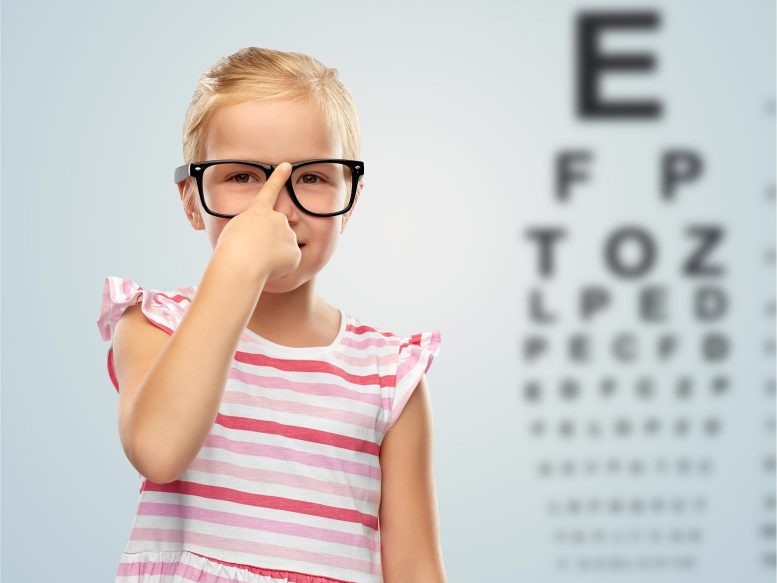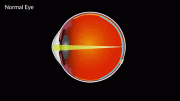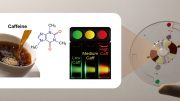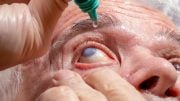
According to a new study, a caffeine metabolite may slow the progression of short-sightedness (myopia) in children.
If proved effective in clinical trials, 7-MX could be a valuable future treatment.
A metabolite of caffeine, known as 7-MX, may slow the progression of nearsightedness, also known as myopia, in children. This is according to observational research published on August 22, 2022, in the British Journal of Ophthalmology.
According to the researchers, 7-MX could become a valuable treatment for a condition for which current options are somewhat limited if it is proven safe and effective in large clinical trials.
Myopia occurs when the eye grows too long, stretching and thinning it. This often starts at the age of 6-7, progressing until the age of 16-20.
In addition to causing nearsightedness, myopia is associated with a heightened risk of various conditions that affect vision and eye health, including macular degeneration, glaucoma, cataracts, and retinal detachment.
Preliminary research indicates that the caffeine metabolite 7-methylxanthine, or 7-MX for short, inhibits excessive lengthening of the eye (axial elongation).
7-MX has been used to treat childhood myopia in Denmark since 2009. But until now it has not been fully evaluated in long-term studies, and the investigators wanted to find out how quickly myopia progresses in children taking 7-MX.
The scientists reviewed the medical records of 711 children (356 girls and 355 boys) treated for myopia between June 2000 and January 2021 at one eye clinic in Denmark.
Comprehensive eye tests, including measurement of axial length, were carried out on the children. 624 (88%) of the children took 7-MX tablets up to 1200 mg daily (average 470 mg) while 87 didn’t, for various reasons.
Their average age was 11 (range 7-15) when they started treatment, and their eye length and degree of myopia were tracked for an average of 3½ years (range 11 months–9 years).
Diopters (D) are the units of measurement used to assess the extent of eye function: the average degree of refractive error (near-sight) to begin with was −2.43 D, which increased by an average of 1.34 D during the monitoring period. -3.00 D is regarded as moderately severe myopia; -6 D or more is regarded as severe myopia.
The average axial length was 24.4mm, to start with, increasing by an average of 0.21 mm/year.
Treatment with 7-MX was associated with a slower rate of worsening myopia and axial elongation, with higher doses seemingly more effective.
Based on these data, the scientists estimated that for a typical 7-year-old with a refractive error of −2.53 D to start with, that child’s myopia would increase by −3.49 D over the next 6 years without treatment.
But with a daily dose of 1000 mg of 7-MX, that same child’s myopia would increase by −2.65 D over the next 6 years.
Similarly, without treatment, axial length would increase by 1.80 mm over 6 the next years, whereas it would only increase by 1.63 mm on a daily dose of 1000 mg.
According to the researchers’ calculations, on average, for an 11-year-old taking 1000 mg 7-MX daily that child’s myopia would increase by −1.43 D over the next 6 years, compared with −2.27 D without treatment. And axial length would increase by 0.84 mm compared with 1.01 mm without treatment.
None of the children taking 7-MX reported any side effects during the monitoring period.
According to the scientists, the findings echo those of experimental studies. However, they acknowledge that their study is observational, and they were not able to account for potentially influential factors, such as genetic factors, ethnicity, time spent outdoors, and time spent on near work. Their findings cannot, therefore, establish causality.
“The question of causality and the size of a possible treatment effect can only be determined through a randomized trial,” they write.
But they conclude: “Existing myopia control intervention methods are not fully effective in preventing children from progressing to high myopia, and 7-MX may become a valuable supplement if causality and efficacy can be confirmed in future randomized controlled trials.”
Reference: “Oral administration of caffeine metabolite 7-methylxanthine is associated with slowed myopia progression in Danish children” by Klaus Trier, Dongmei Cui, Søren Ribel-Madsen and Jeremy Guggenheim, 22 August 2022, British Journal of Ophthalmology.
DOI: 10.1136/bjo-2021-320920









So when I grew up, none of us in my country school were allowed coffee until we were in our teens. No one in our school had glasses. Nowadays every kid over eight walks in with a Starbucks in their hand and by grade six are wearing pop-bottles on their eyes. Explain that one?
I dunno about this.I started drinking coffee at 4yrs, and I needed glasses by 1st grade. I’ve always had at least one cup per day, more when I reached my teens. I’m negative 11 in one eye and negative 10 in the other. Nearsightedness runs in the family, but not like mine. I’ve had 3 retinal tears also. Maybe I’m the exception that proves the rule? Or maybe they’re nuts.